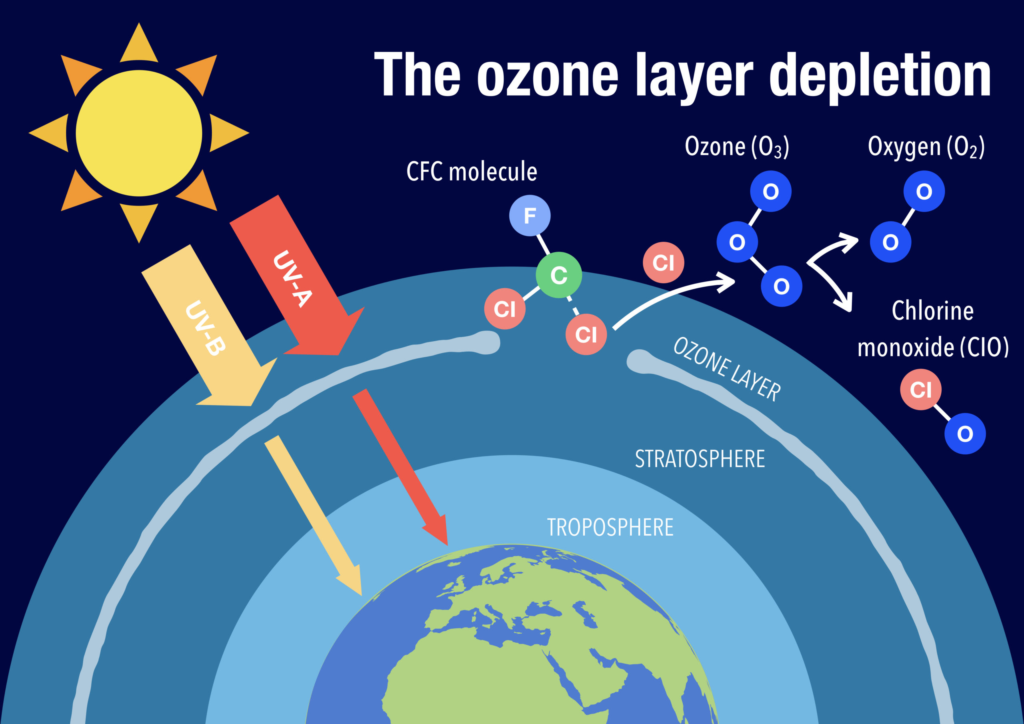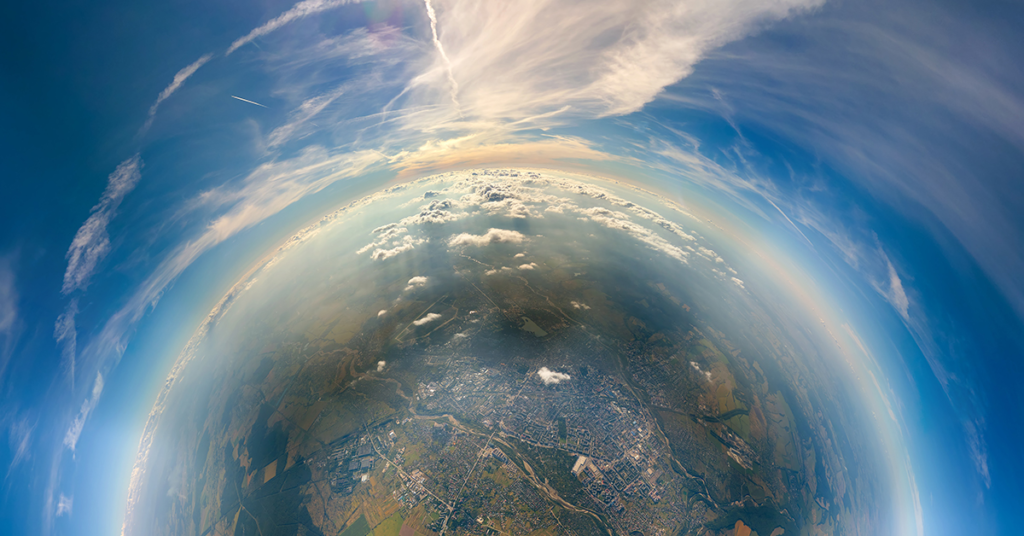Introduction: The Ominous Ozone Hole Enigma The story of the ozone hole is nothing short of a gripping environmental thriller. This blog post invites you to journey into the heart of this atmospheric enigma. Offering an in-depth exploration of its origins, the crisis it sparked, humanity’s response, and the ongoing road to recovery.
Part 1: The Birth of the Ozone Hole To understand the present, we must first dive into the past. We’ll rewind the clock to the mid-20th century. A time when the world was unaware of the hidden dangers lurking above. Through compelling narratives and scientific insights, you’ll uncover the discovery of ozone-depleting substances. The intricate chemistry behind ozone loss, and the gradual emergence of a gaping hole in our planet’s protective ozone layer.
Part 2: The Crisis Unfolds Fast forward to the 1980s when a seismic shift occurred in the world’s perception of the environment. Vividly relive the moment when satellite data unveiled the shocking expansion of the ozone hole over Antarctica. Through vivid descriptions and historical context, you’ll witness the palpable concern that rippled across the globe. Catalyzing urgent discussions on the potential consequences for life as we know it.

Part 3: Humanity’s Rallying Cry The ozone hole crisis served as a wake-up call that transcended borders. Immerse yourself in the negotiations and deliberations that culminated in the Montreal Protocol. An unprecedented international agreement aimed at phasing out ozone-depleting substances. Engaging anecdotes and expert perspectives will illustrate the complex dance of diplomacy. Science, and activism that led to this landmark pact.
Part 4: A Glimpse of Healing As the world took collective action, the ozone hole saga began to take a turn for the better. Through a blend of captivating visuals and scientific data, you’ll witness the gradual recovery of the ozone layer. This section will highlight the positive impact of human intervention. Underscored by the innovative technologies and practices that played a pivotal role in repairing the atmospheric damage.
Part 5: Lessons for Posterity The journey of the ozone hole holds invaluable lessons for our planet’s future. Drawing parallels with contemporary environmental challenges, this segment delves into the broader implications of our ozone-related triumphs. It explores how the collaboration that rescued the ozone layer can inspire fresh initiatives to combat climate change and safeguard the delicate equilibrium of our planet.

Conclusion:
What Really Happened to the Ozone Hole? Is more than a mere narrative—it’s a chronicle of hope, resilience, and human potential. This comprehensive exploration not only educates but empowers readers to recognize the impact of collective action in the face of environmental threats. As you reach the end of this odyssey, you’ll emerge with a deeper appreciation for Earth’s interconnected systems and the imperative to secure a sustainable future for generations to come.
Frequently Asked Questions (FAQ)
Q1: What is the ozone hole? The ozone hole refers to a significant thinning of the ozone layer, a protective shield of ozone gas in Earth’s stratosphere. This depletion allows more ultraviolet (UV) radiation from the sun to reach the surface, posing potential risks to human health and the environment.
Q2: What causes the ozone hole? The primary cause of the ozone hole is the presence of human-made chemicals called ozone-depleting substances (ODS), such as chlorofluorocarbons (CFCs) and halons. These substances break down ozone molecules in the stratosphere, leading to the formation of the infamous hole, most prominently observed over Antarctica.
Q3: How does the ozone layer work? The ozone layer absorbs a significant portion of the sun’s harmful UV radiation. Ozone molecules are particularly effective at absorbing UVB and UVC rays, preventing them from reaching the Earth’s surface where they could cause harm to living organisms.
Q4: What are the consequences of ozone depletion? Ozone depletion can have profound effects on both human health and the environment. Increased UV radiation can lead to higher rates of skin cancer, cataracts, and other health issues in humans. It can also impact marine ecosystems, crop yields, and the overall balance of Earth’s ecosystems.
Q5: How was the ozone hole discovered? The ozone hole’s discovery is credited to British Antarctic Survey scientists, who noticed a significant drop in ozone levels over Antarctica in the late 1970s. This unexpected phenomenon spurred further research and international concern.
Q6: What is the Montreal Protocol? The Montreal Protocol, adopted in 1987. It is an international treaty aimed at phasing out the production and consumption of ozone-depleting substances. It has been successful in curbing the release of these harmful chemicals into the atmosphere. Leading to a gradual recovery of the ozone layer.
Q7: Is the ozone hole shrinking? Yes, thanks to the efforts of the Montreal Protocol and subsequent amendments. The ozone hole has shown signs of recovery. Satellite data indicates that the hole over Antarctica has been gradually shrinking. Though full recovery is projected to take several decades.
Q8: Can the ozone layer be fully restored? While the ozone layer is on a path to recovery, it will likely take time for it to fully heal. Continued adherence to international agreements like the Montreal Protocol is crucial to preventing further depletion and allowing the ozone layer to regain its natural balance.
Q9: Are there lessons from the ozone hole for addressing climate change? Absolutely. The successful international collaboration that tackled the ozone hole crisis serves as a model for addressing global environmental challenges. It highlights the importance of scientific research, policy cooperation, and public awareness in addressing issues like climate change.
Q10: How can I contribute to protecting the ozone layer? Individual actions matter. By reducing your use of products containing ozone-depleting substances. Such as aerosol sprays and certain refrigerants, you can contribute to the preservation of the ozone layer. Additionally, supporting policies that promote sustainability and environmental protection can make a positive impact.
Explore the depths of our ozone hole FAQ to equip yourself with knowledge about this intricate issue. By understanding its complexities. You’ll be better prepared to engage in discussions about our planet’s environmental health and contribute to a more sustainable future.

